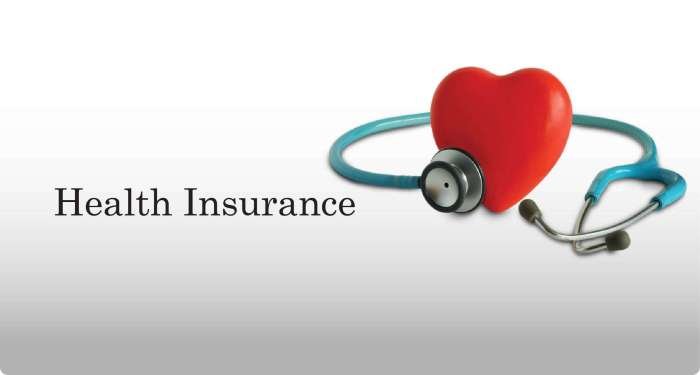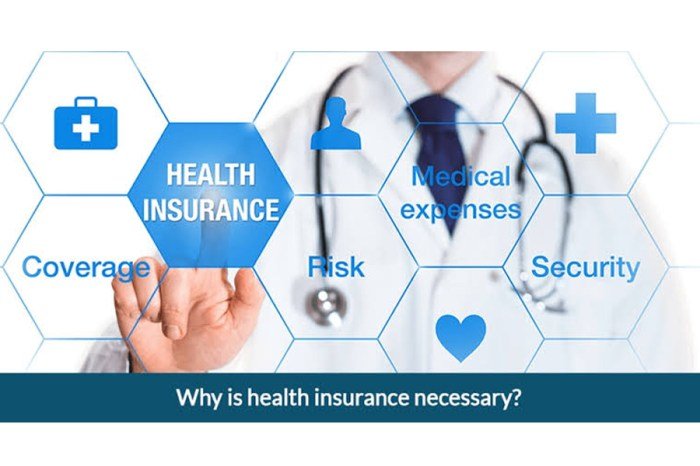Health Plans for Low Income are essential for individuals and families struggling to afford quality healthcare. These plans offer a lifeline to those who might otherwise lack access to essential medical services, ensuring that everyone has the opportunity to receive the care they need.
Whether you’re facing financial hardship or simply seeking more affordable options, understanding the different types of low-income health plans available is crucial.
Navigating the world of health insurance can be overwhelming, especially when you’re on a tight budget. This guide provides a comprehensive overview of low-income health plans, outlining eligibility requirements, available coverage options, and resources to help you find the right plan for your specific needs.
We’ll also delve into the enrollment process, financial assistance programs, and tips for maximizing your benefits.
Eligibility and Qualification

Low-income health plans are designed to provide affordable healthcare coverage to individuals and families who meet certain income requirements. To determine eligibility, several factors are considered, including income level and household size.
Income Eligibility
Income eligibility for low-income health plans is determined by comparing your household’s annual income to federal poverty guidelines. These guidelines vary based on household size and are updated annually. The following table illustrates the 2023 federal poverty guidelines for different household sizes:
| Household Size | Annual Income Limit |
|---|---|
| 1 | $13,590 |
| 2 | $18,310 |
| 3 | $23,030 |
| 4 | $27,750 |
| 5 | $32,470 |
| 6 | $37,190 |
| 7 | $41,910 |
| 8 | $46,630 |
For each additional household member, add $4,720 to the annual income limit.
Documentation Requirements
To prove your eligibility for a low-income health plan, you will need to provide documentation that verifies your income. Acceptable forms of documentation include:
- Pay stubs
- Tax returns
- Social Security benefits statements
- Unemployment benefits statements
- W-2 forms
- Child support payments
- Other income verification documents
Available Plans and Coverage

Finding the right health insurance plan can be a daunting task, especially for individuals with limited income. Fortunately, there are several programs designed to provide affordable and comprehensive health coverage. This section will explore the different types of plans available for low-income individuals, highlighting their benefits, limitations, and eligibility requirements.
Medicaid
Medicaid is a government-funded health insurance program that provides coverage to low-income individuals and families. It is administered by each state, resulting in variations in eligibility requirements and benefits.
- Eligibility:Eligibility for Medicaid is based on income, household size, and other factors, such as disability, pregnancy, and citizenship status. The specific requirements vary from state to state.
- Benefits:Medicaid covers a wide range of healthcare services, including doctor visits, hospital stays, prescription drugs, mental health care, and dental care.
- Limitations:Medicaid coverage may have some limitations, such as limited provider networks and potential wait times for appointments.
Children’s Health Insurance Program (CHIP)
CHIP is a government-funded program that provides health insurance to children from low-income families who do not qualify for Medicaid.
- Eligibility:Eligibility for CHIP is based on income and family size. The specific requirements vary from state to state.
- Benefits:CHIP covers a wide range of healthcare services, including doctor visits, hospital stays, prescription drugs, mental health care, and dental care.
- Limitations:CHIP coverage may have some limitations, such as limited provider networks and potential wait times for appointments.
Marketplace Plans, Health plans for low income
The Affordable Care Act (ACA) established health insurance marketplaces where individuals can compare and purchase health insurance plans. Some marketplace plans offer subsidies to help low-income individuals afford coverage.
- Eligibility:Eligibility for marketplace subsidies is based on income, household size, and citizenship status.
- Benefits:Marketplace plans offer a variety of coverage options, including bronze, silver, gold, and platinum plans, each with different levels of coverage and premiums.
- Limitations:Marketplace plans may have higher premiums than Medicaid or CHIP, and they may have deductibles and co-pays.
Enrollment Process and Resources

Enrolling in a low-income health plan can provide access to essential medical care and financial relief. The enrollment process is generally straightforward, and there are numerous resources available to guide you through each step.
Enrollment Process
The enrollment process for low-income health plans typically involves the following steps:
- Determine Eligibility:The first step is to determine if you qualify for a low-income health plan. This usually involves verifying your income and household size. Many states offer online eligibility tools and calculators to simplify this process.
- Choose a Plan:Once you are deemed eligible, you can choose a health plan that meets your needs. Factors to consider include the plan’s coverage, provider network, and premium costs.
- Complete the Application:You can typically apply for a low-income health plan online, by phone, or through a local enrollment center. The application will require you to provide personal information, including your income, employment status, and household size.
- Enroll in the Plan:Once your application is approved, you will be enrolled in the health plan you selected. You will receive a welcome packet with important information about your coverage and benefits.
Enrollment Assistance
Many organizations and resources can assist you with the enrollment process. These include:
- State Health Insurance Marketplaces:These online marketplaces offer information, eligibility tools, and enrollment assistance for low-income health plans.
- Local Enrollment Centers:Many communities have local enrollment centers staffed with trained professionals who can help you navigate the enrollment process.
- Community Health Centers:Community health centers often provide enrollment assistance to low-income individuals and families.
- Healthcare Navigators:Healthcare navigators are trained professionals who can help you understand your options and enroll in a health plan that meets your needs.
Step-by-Step Guide
Here is a step-by-step guide for individuals seeking enrollment assistance:
- Determine Your Eligibility:Visit your state’s health insurance marketplace website or use an online eligibility tool to check if you qualify for a low-income health plan.
- Contact a Local Enrollment Center:Locate a local enrollment center in your community and schedule an appointment to discuss your options and receive assistance with the enrollment process.
- Gather Required Documents:Collect the necessary documents, such as proof of income, identification, and household size, to complete the application.
- Complete the Application:Fill out the application online, by phone, or in person at a local enrollment center. Be sure to review your application carefully before submitting it.
- Review Your Enrollment Confirmation:Once your application is approved, you will receive a confirmation of enrollment. Review the information carefully to ensure it is accurate.
Financial Assistance and Cost-Sharing

Navigating healthcare costs can be challenging, especially for low-income individuals. Fortunately, various financial assistance programs and cost-sharing mechanisms are available to help make healthcare more affordable.
Financial Assistance Programs
Financial assistance programs are designed to help individuals with limited financial resources access essential healthcare services. These programs can reduce or eliminate out-of-pocket costs, including premiums, copayments, coinsurance, and deductibles.
- Medicaid:This government-funded program provides health insurance coverage to low-income individuals and families. Eligibility criteria vary by state, but generally include income and asset limits.
- CHIP (Children’s Health Insurance Program):CHIP provides health insurance coverage to children from low-income families who do not qualify for Medicaid.
- Premium Tax Credits:Through the Affordable Care Act (ACA), eligible individuals can receive tax credits to help offset the cost of health insurance premiums purchased through the Marketplace.
- Cost-Sharing Reductions:The ACA also offers cost-sharing reductions to eligible individuals, which lower the amount they pay for deductibles, copayments, and coinsurance.
- Hospital Financial Assistance Programs:Many hospitals offer financial assistance programs to patients who are unable to afford their medical bills. These programs may provide discounts or write-offs based on income and other factors.
- Patient Assistance Programs (PAPs):Pharmaceutical companies often offer PAPs to help patients afford their prescription medications. These programs may provide free or discounted medications based on income, diagnosis, and other factors.
Cost-Sharing Mechanisms
Cost-sharing mechanisms are designed to help share the cost of healthcare between individuals and insurance companies. These mechanisms can help keep premiums lower while ensuring that individuals contribute to their healthcare costs.
- Copayments:A fixed amount that you pay for a specific service, such as a doctor’s visit or a prescription.
- Coinsurance:A percentage of the cost of a service that you pay after your deductible has been met.
- Deductible:The amount you pay out-of-pocket for healthcare services before your insurance coverage kicks in.
Financial Assistance Options by Health Plan
Different health plans offer various financial assistance options. It’s important to compare plans to find the one that best suits your individual needs and budget.
- Medicaid Managed Care Plans:Medicaid managed care plans are offered by private insurance companies under contract with the government. These plans often have lower copayments and deductibles than traditional Medicaid.
- Marketplace Plans:Marketplace plans are offered by private insurance companies and are available through the Health Insurance Marketplace. These plans may offer premium tax credits and cost-sharing reductions to eligible individuals.
- Employer-Sponsored Plans:Some employers offer health insurance plans that include financial assistance options for low-income employees. These plans may offer lower premiums, copayments, or deductibles.
Access to Healthcare Services

Low-income health plans provide access to a wide network of healthcare providers and facilities, ensuring individuals can receive the care they need. Understanding how to find in-network providers and the types of services covered is crucial for maximizing plan benefits.
Finding In-Network Providers
Finding healthcare providers who accept your low-income health plan is essential to avoid out-of-pocket costs. Most health plans offer online directories and search tools to help you locate in-network providers within your geographic area.
- Plan Website:Many health plans provide online directories on their websites, allowing you to search for providers by specialty, location, and other criteria.
- Mobile App:Several health plans offer mobile apps that provide similar functionality to their websites, making it convenient to find providers on the go.
- Member Services:If you have trouble finding a provider online, you can contact your health plan’s member services department for assistance.
Common Healthcare Services Covered
Low-income health plans typically cover a wide range of essential healthcare services, including:
| Service | Description |
|---|---|
| Primary Care | Regular checkups, preventive screenings, and treatment for common illnesses. |
| Specialty Care | Care provided by specialists, such as cardiologists, dermatologists, or oncologists. |
| Mental Health Services | Counseling, therapy, and medication for mental health conditions. |
| Prescription Drugs | Coverage for prescribed medications, often with copayments or deductibles. |
| Emergency Care | Treatment for sudden and serious medical conditions. |
| Hospitalization | Inpatient care in a hospital for illnesses or injuries requiring extended treatment. |
Note:Specific coverage may vary depending on the health plan and state regulations. It’s important to review your plan’s benefits booklet for detailed information on covered services.
Navigating healthcare can be challenging, especially for those on a limited budget. Fortunately, resources like health plans specifically designed for low-income individuals can help ease the financial burden. If you’re in the Bloomington area, you might want to check out the Indiana University Health Center Bloomington , which offers a range of services and might be able to provide information on available low-income health plans.
Understanding your options and taking advantage of available resources can make a significant difference in accessing quality healthcare.
Health Plan Benefits and Features

Low-income health plans provide essential coverage for individuals and families who may otherwise struggle to afford healthcare. These plans are designed to offer a comprehensive range of benefits that address various health needs, including preventive care, prescription drugs, mental health services, and other essential services.
Preventive Care Coverage
Preventive care services aim to prevent health problems from developing or worsening. These services include regular checkups, screenings, and vaccinations. Low-income health plans typically cover a wide range of preventive care services, often without any out-of-pocket costs.
Preventive care is crucial for maintaining good health and preventing costly medical interventions in the future.
Prescription Drug Coverage
Prescription drugs are an essential part of managing chronic conditions and treating acute illnesses. Low-income health plans typically offer prescription drug coverage, often through a formulary. A formulary is a list of drugs that the plan covers, and it may have different tiers with varying co-pays or co-insurance.
Many low-income individuals struggle to afford healthcare, but finding ways to stay healthy is essential. One way to prioritize well-being is through exercise, and the fitness center cape coral offers a variety of affordable options. By exploring such resources, individuals can prioritize their health and well-being, even when faced with financial limitations.
Mental Health Services
Mental health services are essential for addressing mental health conditions, such as anxiety, depression, and substance abuse. Low-income health plans typically provide coverage for mental health services, including therapy, counseling, and medication.
Other Essential Healthcare Needs
Low-income health plans also cover other essential healthcare needs, such as:
- Hospitalization
- Emergency care
- Rehabilitation services
- Durable medical equipment
The specific benefits and features of low-income health plans can vary depending on the plan and the state. It is important to carefully review the plan details to understand the coverage and limitations.
Navigating the Healthcare System

This section provides a guide for navigating the healthcare system with a low-income health plan, covering essential aspects like accessing healthcare services, scheduling appointments, understanding billing and claims procedures, and managing healthcare costs.
Finding affordable health plans for low-income individuals can be challenging, but there are resources available. One option to consider is incorporating fitness into your lifestyle, which can contribute to overall well-being and potentially reduce healthcare costs. Check out johnson’s fitness and wellness for helpful tips and resources, and remember to explore various health plan options that align with your income level and needs.
Accessing Healthcare Services
Your low-income health plan provides access to a network of healthcare providers, including doctors, hospitals, and other medical professionals. To find a provider in your network, you can use the plan’s online directory or call customer service.
Scheduling Appointments
Once you’ve identified a provider, you can schedule an appointment. Most providers offer online scheduling, but you can also call their office directly. When scheduling, inform the office that you have a low-income health plan and provide your plan information.
Understanding Billing and Claims Procedures
Your low-income health plan covers most healthcare costs, but there may be some out-of-pocket expenses. Here’s how billing and claims procedures work:
- Provider Billing:When you receive healthcare services, your provider will submit a claim to your health plan. The plan will review the claim and determine the amount it will pay.
- Co-pays and Co-insurance:You may be responsible for co-pays or co-insurance, which are small amounts you pay at the time of service.
- Out-of-Pocket Maximum:Your plan may have an out-of-pocket maximum, which is the maximum amount you’ll pay for healthcare costs in a year.
- Explanation of Benefits (EOB):You’ll receive an EOB from your health plan after each claim is processed. The EOB explains the charges, the amount your plan paid, and your responsibility.
Managing Healthcare Costs
Here are some tips for managing your healthcare costs:
- Use in-network providers:Using providers within your plan’s network ensures lower costs.
- Ask about generic medications:Generic medications are often less expensive than brand-name medications.
- Get preventive care:Regular checkups and screenings can help prevent costly health problems.
- Shop around for prescriptions:Compare prices for medications at different pharmacies.
- Ask about financial assistance programs:Some plans offer financial assistance programs to help with out-of-pocket costs.
Maximizing Benefits
To maximize your benefits:
- Review your plan documents:Understand your plan’s coverage and benefits.
- Stay informed:Keep up with changes to your plan and healthcare laws.
- Use your plan’s resources:Take advantage of your plan’s resources, such as online tools, mobile apps, and customer service.
Last Point

Securing affordable healthcare is a fundamental right, and understanding your options is the first step towards accessing quality care. By exploring the various low-income health plans available, individuals and families can gain peace of mind knowing they have access to essential medical services without breaking the bank.
Remember, resources are available to help you navigate the enrollment process and find the best plan for your unique circumstances. Don’t hesitate to reach out for assistance if needed, and empower yourself with the knowledge to make informed decisions about your health and well-being.
FAQ Summary: Health Plans For Low Income
What are the eligibility requirements for low-income health plans?
Eligibility requirements vary depending on the specific plan and state. Generally, you’ll need to meet income guidelines and residency requirements. You may also need to be a U.S. citizen or legal resident.
What are the different types of low-income health plans?
Common types include Medicaid, CHIP (Children’s Health Insurance Program), and marketplace plans. Medicaid is a government-funded program for low-income individuals and families, while CHIP provides coverage for children in families that earn too much to qualify for Medicaid. Marketplace plans offer subsidized coverage through the Affordable Care Act.
How do I enroll in a low-income health plan?
You can typically enroll through your state’s health insurance marketplace or directly through the program administrator. You’ll need to provide documentation to verify your income and residency.